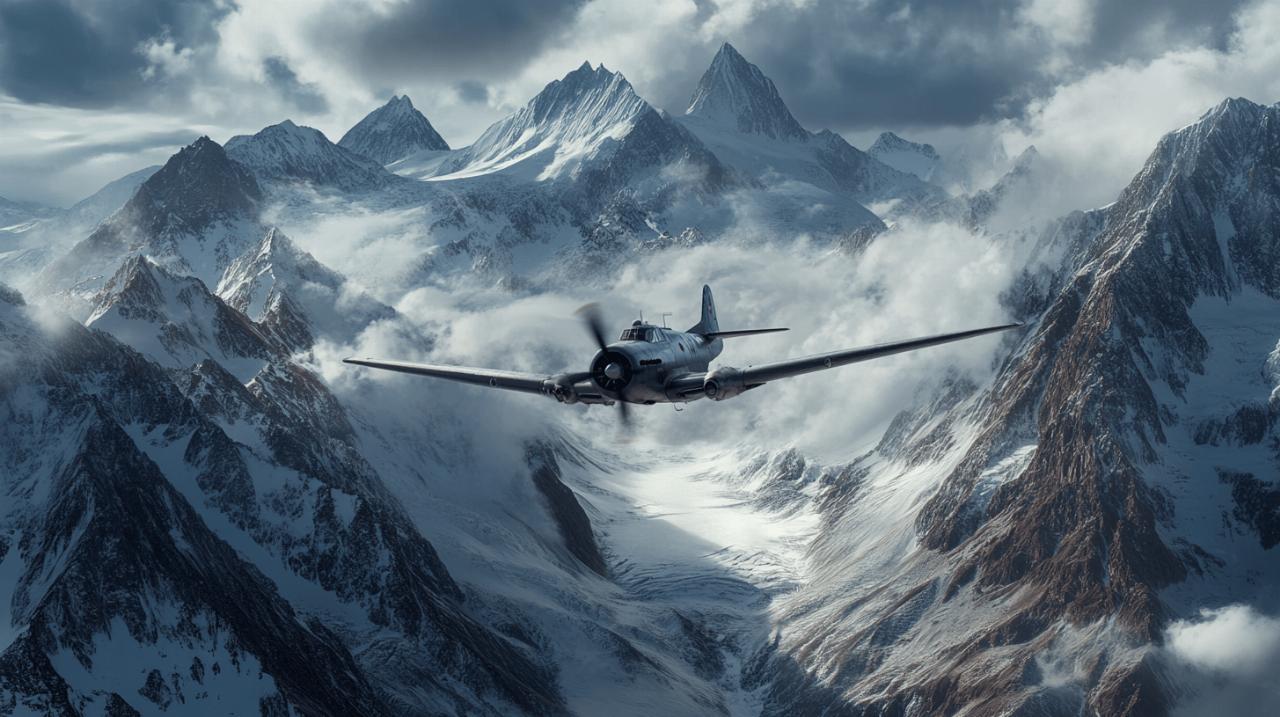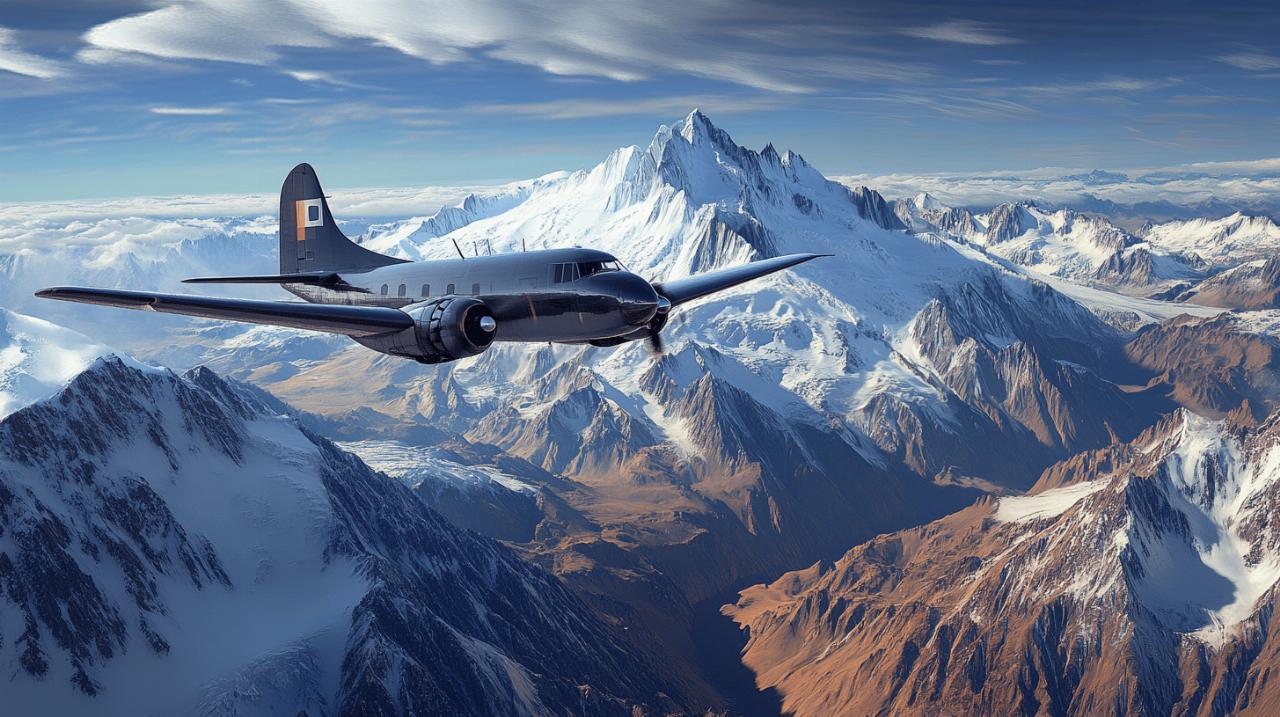The 1972 Andes flight disaster stands as one of the most harrowing survival stories in modern history, testing the limits of human endurance and leaving an indelible mark on Uruguayan national identity. When Uruguayan Air Force Flight 571 crashed into the remote Andes Mountains, nobody could have predicted the extraordinary 72-day ordeal that would follow or how it would forever change those who lived through it. The story continues to resonate across generations, recently gaining renewed attention through JA Bayona's film adaptation 'Society of the Snow' on Netflix.
The Tragic Crash in the Andes
Details of the Ill-Fated Journey
On 13 October 1972, Uruguayan Air Force Flight 571 departed from Montevideo, Uruguay, chartered by an amateur rugby team known as the 'Old Christians' along with their supporters and family members. The aircraft was bound for Santiago, Chile, where the team was scheduled to play a match. The flight carried 45 passengers in total, including the crew, creating what should have been a festive atmosphere of camaraderie and sporting spirit. The journey represented not just a sporting event but also reflected the close cultural connections between these South American nations.
Navigation errors and weather conditions
What began as a routine flight quickly turned catastrophic due to a fatal combination of navigation miscalculations and treacherous weather. The pilots, confronted with dense cloud cover obscuring the towering Andean peaks, believed they had cleared the mountain range when in reality they were still flying through it. The aircraft crashed violently into a remote mountainside in Argentina near the Chilean border, instantly killing twelve people. The remoteness of the crash site, nestled high in the snowy Andes at an altitude where oxygen is thin and temperatures brutally low, meant that survivors found themselves in one of the most hostile environments on Earth with virtually no hope of immediate rescue.
Survival against all odds
Facing Extreme Conditions in the Mountains
The survivors of the initial impact faced a grim reality. Stranded at high altitude with many suffering serious injuries, they endured freezing temperatures that plummeted well below zero at night. The thin fuselage of the aircraft became their only shelter against the bitter cold and howling winds. Their situation worsened dramatically on 29 October when an avalanche thundered down the mountainside, filling the wreckage with snow and claiming eight more lives. This devastating event extinguished much of the remaining hope among the survivors, who by then had heard on a small radio that the official search efforts had been called off after just eight days. The harsh mountain environment continued its assault on their will to live, with frostbite, altitude sickness, and starvation becoming daily challenges.
The difficult decision to sustain life
As days stretched into weeks with no rescue in sight and their meagre food supplies completely exhausted, the survivors faced the most difficult moral dilemma imaginable. The grim reality of their situation forced them to make an unthinkable choice: they would need to consume the flesh of their dead friends and teammates to survive. This decision came after profound ethical discussions and intense soul-searching among the group. For many, their Catholic faith provided both conflict and eventually a framework for understanding their actions as necessary for survival rather than sinful. This aspect of their ordeal remains central to understanding the psychological depth of their experience and the bonds that formed between them during those dark days in the mountains.
The extraordinary rescue mission
The brave trek across the andes
As their situation grew increasingly desperate, it became clear that waiting for rescue was no longer an option. Two survivors, Nando Parrado and Roberto Canessa, volunteered to attempt what seemed impossible: a journey on foot through the treacherous Andes in search of help. Using makeshift snowshoes crafted from seat cushions and carrying minimal supplies, they embarked on their perilous expedition on 12 December. The trek took them across some of the most forbidding terrain on Earth, climbing peaks over 4,500 metres high and navigating treacherous snow fields. After ten gruelling days, they encountered Chilean herdsmen who alerted authorities about the survivors still waiting at the crash site. Their heroic journey represents one of the most remarkable feats of human determination and physical endurance in survival history.
The 72-day ordeal and final salvation
The rescue operation mobilised quickly once authorities learned that survivors remained at the crash site. Helicopters were dispatched to the remote location, and on 22 and 23 December 1972, the remaining survivors were finally evacuated from their frozen prison after an astonishing 72 days in the mountains. Their return to civilisation was met with a mixture of jubilation, shock, and intense media scrutiny. Medical professionals were amazed at how the sixteen survivors had managed to endure such extreme conditions for so long. The world soon learned of the difficult choices they had made to stay alive, leading to complex discussions about morality in the face of death that continue to this day. Their reintegration into society would prove to be yet another challenge in their extraordinary journey.
Cultural impact and legacy
Representations in Media and Literature
The story of Flight 571 has captured the global imagination, inspiring numerous books, documentaries and films that attempt to convey the profound physical and psychological ordeal endured by the survivors. The 1974 book 'Alive' became an international bestseller and was later adapted into a film of the same name. More recently, JA Bayona's 'Society of the Snow', based on Pablo Vierci's 2008 book, has brought the story to a new generation through Netflix. Bayona's approach focused less on the sensational aspects and more on the human elements of friendship and generosity that emerged under the most extreme circumstances. The film has received critical acclaim, earning a Golden Globe nomination for best non-English language picture and becoming Spain's entry for the best international feature film Oscar.
Symbol of Human Resilience in Uruguayan Identity
For Uruguay, a small nation of just over three million people, the Andes tragedy and subsequent survival story has become woven into the fabric of national identity. The survivors, including figures like Nando Parrado, Roberto Canessa, and Carlos Paez Rodriguez, have become symbols of resilience and hope. Their story transcends the sporting world from which they came, representing something fundamental about human spirit and determination. Public commemorations, museum exhibits, and educational programmes ensure that younger generations of Uruguayans understand the significance of this event. The crash narrative serves as a powerful metaphor for overcoming adversity through community, ingenuity, and unwavering hope—qualities that many Uruguayans consider central to their national character. This transformation of collective trauma into a source of national pride illustrates how even the darkest chapters of history can ultimately strengthen cultural identity and social cohesion.
The Modern Retelling: Society of the Snow
The story of Uruguayan Air Force Flight 571, which crashed in the Andes Mountains on 13 October 1972, remains one of the most remarkable survival tales in modern history. The flight, chartered by an amateur Uruguayan rugby team travelling from Montevideo to Santiago, carried 45 passengers—only 16 of whom would eventually be rescued after an extraordinary 72-day ordeal. The crash site, located in Argentina near the Chilean border, became the setting for a harrowing struggle against freezing temperatures, limited resources, and the unforgiving mountain environment. After initial search efforts were abandoned just eight days after the crash, the survivors faced impossible choices, including the decision to consume the bodies of their deceased companions to stay alive. This pivotal moment came after an avalanche on 29 October claimed eight more lives beyond the 12 who perished in the initial crash. The rescue finally came on 22-23 December 1972, after two survivors trekked across the mountains and found Chilean herdsmen who alerted authorities.
J.a. bayona's netflix film adaptation
Spanish filmmaker J.A. Bayona has brought this powerful story to life again through his film 'Society of the Snow', released on Netflix in January 2024. Based on Pablo Vierci's 2008 book of the same name, Bayona's adaptation aims to present a more nuanced perspective of the Andes plane crash, focusing on the human elements of friendship and generosity rather than simply the horror aspects that often dominate retellings. To ensure authenticity, Bayona interviewed survivors and even visited the actual crash site to experience the harsh conditions firsthand. The production process was notably demanding, with actors losing weight and enduring genuine cold conditions during filming in the Sierra Nevada mountains. This commitment to realism helps the film depict not just the physical struggle of the 16 survivors, but also the moral and psychological challenges they faced during their 72 days stranded in the mountains. Unlike previous adaptations, 'Society of the Snow' devotes significant attention to the brave trek undertaken by Nando Parrado and Roberto Canessa, who journeyed through the Andes to find help and ultimately secured the rescue of their remaining companions.
Golden globe recognition and global reception
The film's artistic merit and powerful storytelling earned 'Society of the Snow' a Golden Globe nomination for Best Picture Not in the English Language, while also being selected as Spain's entry for the Best International Feature Film Oscar. This recognition highlights how the 1972 Andes crash continues to resonate with global audiences more than five decades after the event. Released in Spanish cinemas on 15 December 2023, followed by the UK on 22 December, and finally arriving on Netflix on 4 January 2024, the film has reached viewers worldwide, introducing new generations to this extraordinary tale of survival. The film's reception suggests that the story of Flight 571 transcends its specific time and place, speaking to universal themes of human resilience, moral complexity, and the lengths people will go to survive. By focusing on all 45 passengers rather than just the 16 survivors, Bayona's film honours both those who lived and those who perished, presenting a more complete picture of how this traumatic event shaped not only individual lives but also became woven into Uruguayan national identity. The global platform provided by Netflix has allowed this distinctly South American story to reach new audiences, ensuring that the legacy of the 1972 Andes survivors continues to inspire and challenge viewers worldwide.




